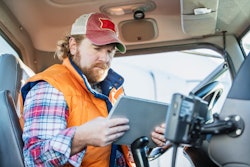Transportation is no stranger to technology. The industry has embraced innovations for years to solve pain points in safety, over-the-road expenses, and equipment utilization. Yet trucking’s turnover rate remains among the highest of any industry in the United States.
No strategy — from pay increases to more home time and better equipment — has cracked the code to stop this revolving door. The reason? A CCJ survey found that 53% of fleet respondents feel they are struggling to find and keep team members because they are not doing enough to prioritize the driver experience.
Technology has taken on many of the industry’s challenges and has a role to play in confronting this problem. Next-generation ELDs and telematics systems have made it easier for fleets to run third-party apps and utilize tablet devices. Likewise, many products have a consumer-style user interface (UI) and user experience (UX) to help simplify work for drivers.
Yet no ELD and telematics product offers a one-size-fits-all solution. Pre-packaged features and functions are either too sparse or cookie-cutter to meet every fleet's unique specification. Even more rare are apps designed to elevate the driver experience as their top priority. For these reasons, many of the best fleets are deploying custom driver apps to support their most important resource: the person behind the wheel.
More than 90% of truck drivers use smartphones every day and all of them should expect technology to be part of their work experience. But they need technology to increase productivity, efficiency and improve life on the road. When fleets invest in a custom app to support these goals, they have a distinct advantage in helping drivers succeed.
Searching online information about the nation’s top 20 largest fleets shows that 14 are now using custom-built mobile apps. But small and mid-sized fleets are often behind the technology curve due to limited in-house development resources and the tremendous cost of building their own app. While off-the-shelf options exist for mobile apps, limited functionality tends to slow adoption and leaves fleets looking for more.







